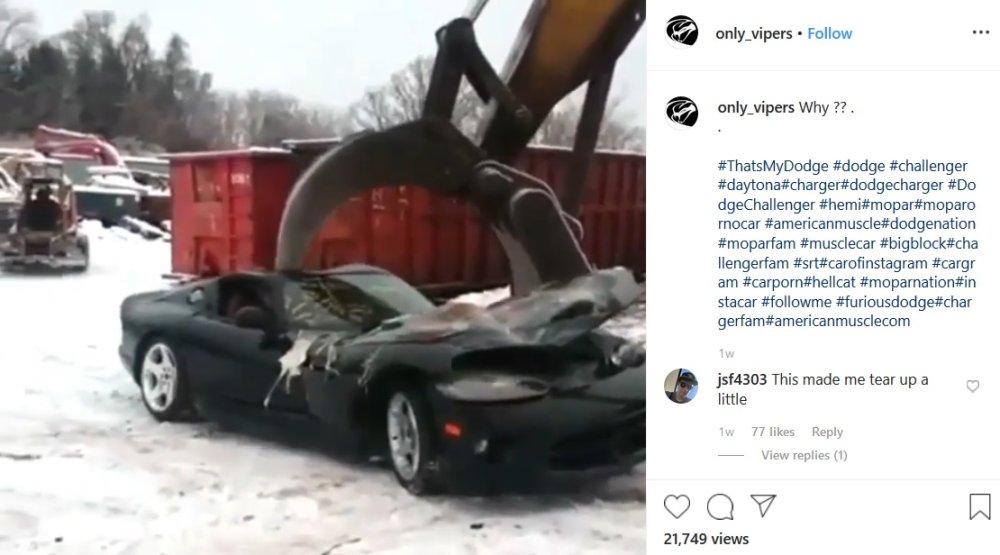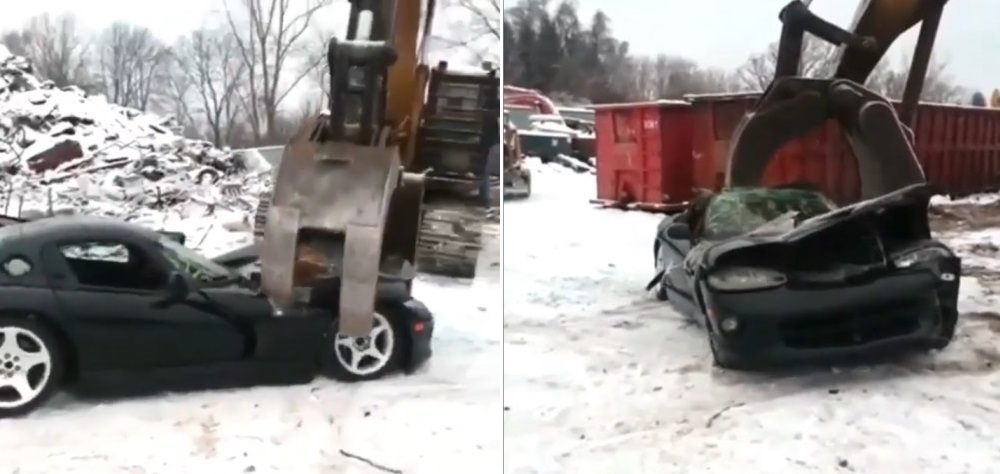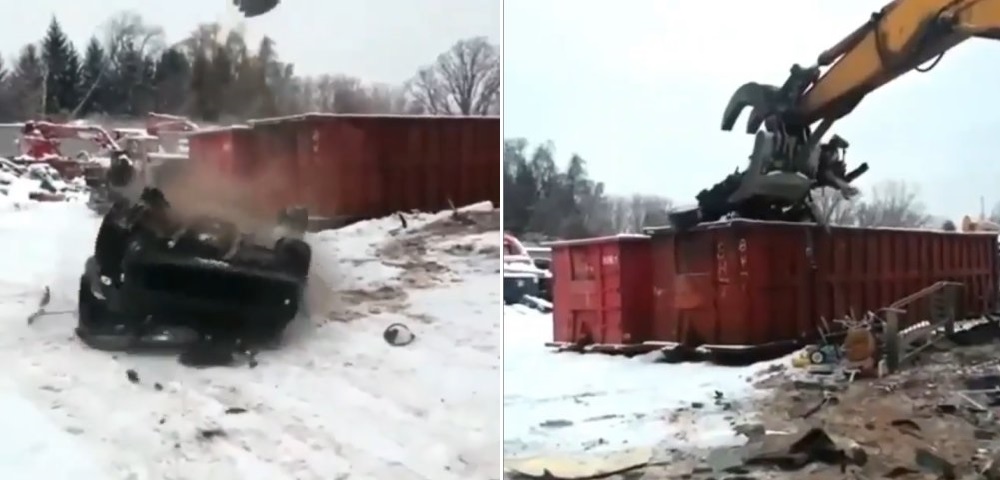Dodge Viper Getting Crushed Has Us All Choked Up
Dodge Viper was one of the early preproduction models, most of which were destroyed in this fashion.
When the Chrysler Corporation was developing the Dodge Viper, they made a great many preproduction test cars. There were 93 preproduction Vipers made for the first generation, none of which could be sold once testing was complete. The company didn’t know what to do with cars that couldn’t legally be sold or driven on the street, so they sent them to technical education programs around the country.
While there, students got to learn how to work on modern cars by turning wrenches on a first generation Dodge Viper preproduction test car. That had to be a great experience for the students, but after two of these cars were driven on the road and crashed, Chrysler requested all of them back out of concern of legal liability.

Once again tasked with getting rid of more than 90 preproduction Vipers, Dodge sent them off to be destroyed in a way that would guarantee that they could not be driven on the street. According to The Drive, this video from the Only_Vipers Instagram account shows the brutal demise of one of those Vipers back in 2014.
Dodge Viper Education Program
If you aren’t familiar with the story of the 93 first generation Dodge Viper preproduction test cars that were leant to educational programs around the country, here is a quick recap.
Dodge took the majority of these 93 Viper test cars and sent them to technical schools around the country. Since these were preproduction models, they were not equipped with proper emission control components, making them illegal for street use. Also, as part of the preproduction program, these cars can only be registered by the automaker, so even if someone got ahold of one, the VIN would prevent it from being registered for street use.

The problem with this is that when Dodge was done testing the first generation cars, they had to get rid of them. The cars couldn’t be sold to the public, so they were borrowed-out to the technical schools, but Chrysler maintained ownership. The problem with that approach was that when students from those technical programs decided to go joyriding and crash two of the cars, the liability fell on Chrysler.
Upon realizing the pending liability, the company began reclaiming cars from the schools. This time, once the automaker had them, they made sure that no one drove them on the street by literally destroying the cars. A few were spared, but most were completely crushed similarly to the car in the video above.
Crushing a Legend
While the story is fairly painful for fans of the Dodge Viper, the video is fairly short. The huge machine uses a claw to crush the front of the car, then the roof, before lifting what is left high into the air, dropping the mangled machine back into the snow.

The tragic ending of this Viper is concluded with the car being lifted and dropped into a gigantic dumpster. It is hardly a fitting ending for such a legendary car, but with the modern world of liability, Chrysler couldn’t be too careful.
